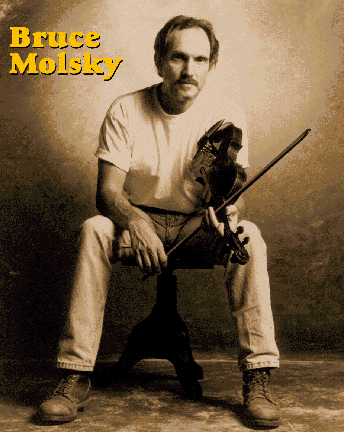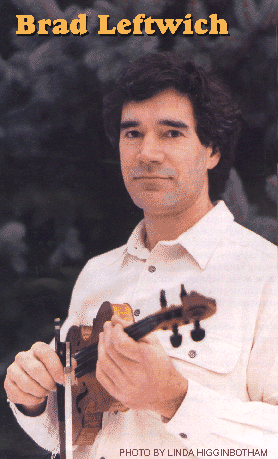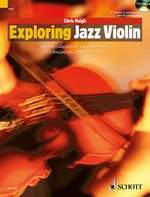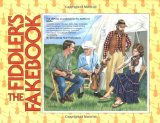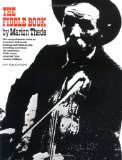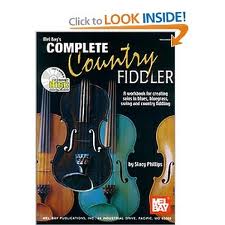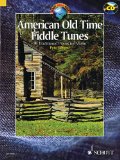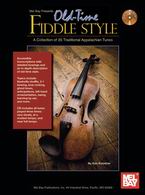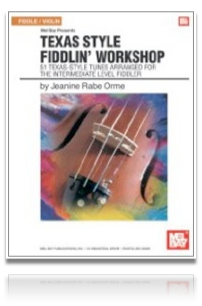
MENU TO FIDDLE STYLES:
Exploring Country and Bluegrass Fiddle (Book and video course)
VISIT THE FIDDLE CHANNEL FOR FREE FIDDLE LESSONS, TUTORIALS, AND WORKSHOPS!
Old Time Fiddle LEARN OLD TIME FIDDLE ON THE FIDDLE CHANNEL!
British settlers began arriving in the uplands of the southeast in the mid 1700's, colonising the Blue Ridge mountain and Southern Appalachian states of Virginia, West Virginia, North Carolina, Kentucky and Tennessee. Whilst fiddlers would have existed among all the nation's settlers, it was in these isolated communities of the southeast that the tradition was best preserved.With little help to be expected from outside, self-sufficiency was essential. The big tasks of rural life- barn raising, stone picking, apple peeling and bean stringing and so forth were communal affairs where all the neighbours would help out, the day's work invariably capped with drinking, dancing and music, for which the local fiddler was essential. He was at the same time greatly prized by the community and condemned by the churchman, who saw only idleness, liquor and licentiousness associated with "The Devil's Box". Early fiddlers could name among their ranks such diverse luminaries as the pioneer Davey Crocket and, surprisingly, the author of the declaration of Independence, Thomas Jefferson. Jefferson was an accomplished player and practiced every day. He is said to have been so fond of his fiddle that when he heard that his family home had been destroyed by a fire, he first asked his servant "Are all the books destroyed?", and was told "Yes, massa, dey is, but we saved de fiddle!"
Fiddle Contests
Of course, the fiddle was not the only instrument available. The Jew's Harp was popular, as were the plucked or hammered dulcimers. With emancipation in the 1860's African Americans started to move into the Appalachians, bringing with them the banjo and a new style of guitar playing. These instruments gradually became incorporated into the string band tradition that we would recognise today. Harmonica, autoharp and mandolin also arrived at the turn of the century, largely via the new mail-order catalogues. The fiddle, however, remained pre-eminent, and fiddlers were by now becoming celebrities far beyond their own communities. Fiddle contests, with a history dating back to at least the 1730's, became hugely popular events, with skilled practitioners stalking the land like gunfighters in search of prize money. It was not unknown for such contests to be completely fixed: a travelling showman would arrive, propose a championship, and then watch his apparently unknown associate ride into town and scoop the prize.
CONTEST FIDDLING
The earliest recorded American fiddle contest was in 1736, held in Hannover County, Virginia, the prize offered being “a fine Cremona fiddle to be plaid for, by any number of country fiddlers” With fiddling being such a valued skill, there would always have been an element of competetiveness between fiddlers, who would be vying for the best jobs and the highest fees, and also between the fans, who wanted their local hero to be seen as the best. Some of the contests were mobile; a promoter would arrive in a town square and announce the open contest and the cash prize. The local fiddlers would all know one another ,but would be wary of a stranger- he might be a travelling “gunslinger” of a fiddler who would win wherever he went, or might even be a “ringer”, in league with the promoter.
The concept of a “brag fiddler” developed- someone who fancied his own skill ,and was happy to take on all comers to prove it. In such a competitive atmosphere, showmanship was at a premium. Fiddlers would develop a patter and stage show, and “trick fiddling” started to evolve. This involved finding ever more bizarre ways to play the instrument- tossing the fiddle in the air, playing behind the head, one arm under one leg, fiddle upside down, bow held between the knees and fiddle held with both hands, and so on. Certain tunes became associated with trick fiddling; using Pop Goes The weasel a fiddler would play each section of the tune in a different contorted position. Expert trick fiddlers could do all these antics whilst playing accurately and in time. Alabama fiddler Monkey Brown was one such fiddle wrestler; he got his nickname when it was said of him at a Tuscaloosa fiddle convention .."That boy can do more with a fiddle than a monkey can with goobers!”
Less athletic but equally demanding tricks developed along more conventional lines; the double shuffle or “hokum bowing” is a flashy pattern of triplets carrying across two bars; this was popularised by jazz fiddler Joe Venuti in the late 1920’s, incorporated into “The Beaumont Rag”, and reached its apogee in the tune “Orange Blossom SpeciaL” in the 1940’s.Fiddle contests (a term more or less synonymous with fiddle conventions) were hugely popular all across the States for over two centuries. Most were small, local affairs in schoolhouses or courthouses, but many were huge, attracting dozens of fiddlers and thousands of eager fans. A fiddle contest in Joplin, Missouri in 1926 is reported to have attracted 4000 listeners. It was possible for a fiddler who was prepared to travel to attend three or four contest a week, earning cash prizes or produce of some kind; these prizes would have been particularly welcome when the conventions reached their peak, which was in the gloomy years of the Great Depression.
Howard Wight Marshall, in his book Fiddler's Dream, described how contests meant different things to different competitors:
“For some fiddlers, the process of competing is a passion, a Darwinian drive for supremacy and dominance. For many others, a fiddlers contest is a chance to bring home some much needed grocery money. Some love trophies. Some focus on the chance to be around like-minded musicians and have no emotional investment in “winning” or “losing”.
The poster for a typical contest, held in Dekalb County, Alabama in 1933, boasted;
“The Biggest, the Funniest, the most Soul-inspiring Event in the history of the Fiddle and the Bow. The old time tunes will rekindle the smoldering fires of youth, retouch the golden heartstrings or a broken chord, rejuvenate and transplant the soul to the green fields of memory’s ecstatic joys and pleasures of the LONG AGO”In the early days, flashy tricks were one sure fire way to walk off with the prize. It was a case of almost anything goes, whether it was trilling like a mockingbird, braying like a mule, hollerin’, jokin’ or dressing as a rooster to play the Chicken Reel. Practically the only thing not allowed was a player who had formal training; the old timers saw a big difference between themselves and the purveyors of more highfalutin’ classical music, and wanted to maintain that difference. If a player “trembled his fingers” (ie used vibrato), he would be viewed with deep suspicion.
The contests were always highly entertaining, and the larger ones may have been combined with other attractions such as hog calling, cracker eating, husband calling, buck dancing, lying contests, ugliest fiddler contests and so on.
More recently, as contests have become more formalised trick fiddling, cross tuning, hokum bowing and the tunes most associated with them, are explicitly banned in most competitions. Typically a contest will be divided into three age groups, and in each round you will play three tunes; a breakdown, a waltz and a” tune of choice” such as a rag, polka or hornpipe. There’ll be a time limit of around five minutes. The judges are normally professional musicians, and they will be looking for clarity, intonation, rhythm and creativity. After a considerable lull in postwar years, fiddle contests have once more become very popular, and hundreds of them attract large audiences across the USA and Canada. The National Old Time Fiddlers Contest at Weiser, Idaho, has been held annually since 1953. Another important contest is the Grand Master Fiddler Championship, started at the Grand Ole Opry in 1972 by Roy Acuff and Perry Harris. Mark O'Connor was among the past winners (three times!)A typical set of rules will include a paragraph such as; No cross-tuned fiddles, five string fiddles or plucking on strings allowed. TRICK FIDDLING tunes such as Orange Blossom Special, Listen to the Mockingbird, Black Mountain Rag and Lee highway Blues WILL NOT BE ALLOWED during competition!
Old time fiddling has as much diversity within it as any other type of fiddling, but in the contest environment one sub-species has, by a process of natural selection, come to dominate. This is the Texas style, now so common that the term “Texas fiddling” is synonymous with “Contest Fiddling” Benny Thomasson was the player who brought this style to the forefront, possibly learning the basics from blind Kentucky fiddleplayer Ed Haley. Mark O’Connor, before branching out in every direction possible, took it to its peak.
Whereas the old hillbilly style of bowing was largely an aggressive saw-stroke action, with one bow per note, Texas fiddling uses the “Long Bow method”. I believe Henry V of England used this with great success against the French , but I could be wrong. Texas bowing uses a smooth, flowing action with several notes slurred into one bow. Melodic and harmonic variations have developed to an almost baroque extent, and an element of improvisation is also used. Breakdowns are commonly played with swing rather than “straight”, and are often at a slower tempo than in Appalachian style.
Double stops and higher positions are common, a warm clear tone and perfect intonation are de rigeur. It is a style far more suited to the concert platform than the dance hall. In short, Texas fiddling, though the direct progeny of old time, is a very modern young thing which its grandparents would hardly recognise.Early fiddle recordings
With the arrival of the recording industry, national fame became an attainable for old time musicians. Seven-times Georgia fiddle champion Fiddlin' John Carson was lured into an Atlanta broadcasting studio with the promise of "a snort of engineer's whiskey", and in 1923 he recorded Little Old Log Cabin in the Lane and The Old Hen Cackled and the Rooster's going to Crow.
OKeh record label head Ralph Peer declared the result "pluperfect awful", but the release was an immediate success and Carson vowed to "quit makin' moonshine and start makin' records!"
Eck Robertson and Blind Ed Haley were prominent fiddlers in the new gold rush which was to become the massive industry of country music. Tommy Jarrell, from North Carolina, was among the most influential players, recording seven albums and, late in life, achieving worldwide recognition. Among the earliest "commercial" old-time fiddle players was Clayton McMichen from Georgia. He was the key figure in possibly the first "manufactured" old time group the Skillet Lickers, created to perform and record humorous old time musical skits such as "Corn Licker still in Georgia". In keeping with the ethos which pervaded the Grand Old Opry and the rest of the country music world, the Skillet Lickers played up to the hillbilly/country bumpkin image. But he was no mere 2-dimensional showman. He was a great technician; old time banjo player Harry Bickle is quoted in Fiddler Magazine as having seen McMichen play Old Joe Clark "In thirteen keys"! He must have invented one of his own. His taste was also modern and eclectic; he worked with many jazz musicians, and is said to have been playing Western Swing in the 1920's, ten years before Bob Wills made the genre famous. He worked with the first great Singing Cowboy, Roy Rogers, and his playing was a big influence on a host of younger fiddle players- among them Roy Acuff, Chubby Wise, and Bob Wills himself.
Alongside commercial recording, a determined effort was made by musicologists to record and preserve old time music in its original state. Following in the footsteps of Cecil Sharp, who collected Appalachian tunes and songs from 1916-18, Alan Lomax made many field recordings in the 1930's for the Library of Congress.
As radio and the phonograph entered almost every home it became possible for many more people to hear old time music, but at the same time it was becoming commercialised, watered down, cleaned up and irrevocably changed. Local stylistic differences which had been passed down the generations were all but lost, and with the arrival of the triple threat of amplification, bluegrass and rock and roll, the writing was on the wall for old time music.
Revival of Old Time fiddle music
Fortunately, as with so many folk styles, the 60's and 70's saw a reawakening of interest by young people tired of slick but shallow commercial music. Bands such as the New Lost City Ramblers, which included Mike Seeger on fiddle, sought to recreate the original old time sound, and today there are many fine players such as Brad Leftwich, Bruce Molsky and Bruce Green. Those who concentrate solely on old time fiddling tend to have a relatively low profile (it's not a profitable business to be in!); better-known professionals whose style encompasses some old time fiddling include John Hartford and Jay Ungar.John Harford, Bruce Molsky and Brad Leftwich
Old Time music got a huge shot in the arm when, in 1990, the Cohn Brothers released their quirky comedy “O Brother Where art Thou”. Set during the Depression era in the southern States, it has a plot loosely based on the plot of Homer’s Odysey, The story centres around a group of escaped convicts (led by George Clooney) ,who form an impromptu old time band, play “for ten dollar apiece, singin’ into a can!”, and become an overnight success, helping to re-elect the Tennessee Governor Pappy O’Daniel, and earning a pardon Though full of humour, the film beautifully captures the gritty reality of the period, and the music, unusually for Hollywood, is fully authentic. Along with a few vintage recordings, most of the tracks are recreations by the cream of bluegrass and old time musicians. Bluegrass star Alison Krauss is one of the lead vocalists, and fiddle playing comes from old-time fiddle guru John Hartford and bluegrass session king Stuart Duncan.
The key song on the multi Grammy-award winning soundtrack is Man of Constant Sorrow, written by the blind Kentucky fiddler Dick Burnett around 1913. Made famous by the Stanley Brothers, versions also appeared on the debut albums of Peter Paul and Mary, Judy Collins, Rod Stewart and Bob Dylan.
Five million copies of the soundtrack were sold, and many of the musicians went on to perform songs from the film on a live tour and DVD release, entitled “Down from the Mountain”Old Time fiddle technique
Old time fiddling evolved primarily for the accompaniment of dancing. As fiddle was often the sole instrument, double stops and drones are frequently used, giving more volume and a fuller sound. Some fiddlers raised one or two strings with matchsticks allowing the possibility of triple stops. A whole series of alternative tunings may be used, allowing the strings which are not fingered to drone or ring more freely. The simplest change would be ADAE (tuning up the bottom string a tone) for playing tunes in the key of D. This allows easier doubling of the D string (for those who want to spare their lazy fourth finger on the G string!), and allows some more interesting frones and dissonances. With the "high bass" or "dead man's tuning", both G and D are tuned up, giving AEAE; this is perhaps the most commonly used cross tuning.; most old time fiddlers use this for all A tunes. Along with GDGD, this tuning has the advantage that you can play a melody on two strings in two different octaves, both using the same fingering. Other tunings include the Black Mountain tuning AEAC#, and the Bonepartes Retreat tuning DDAD.
With the fiddle in one of these tunings it is possible for a second player to "beat the straws"; little "fiddlesticks" are hammered rhythmically on the lower strings giving a strange zinging sound, whilst the fiddler is bowing on the upper strings.
Fingering tends to be quite simple, with little ornamentation beyond a few slides; what is greatly admired among old time fiddlers is an energetic and driving bowing rhythm. In old time music there is little in the way of structure to the performance of a tune. Solo breaks, the life and soul of bluegrass, would be considered egotistical and newfangled. Because they tend to be repeated many times in a row, many fiddle tunes have words to go with them, often humourous if not ribald. To ease simultaneous playing and singing, the fiddle is often held somewhere on the upper chest, tilted clockwise to facilitate heavily accented downbows.
Old time fiddle repertoire
Many old time fiddle tunes have words- they were traditionally played for dancing over and over again, so sung verses helped to keep them interesting. They would often be semi-improvized, humorous and often downright scurrilous.Among the many tunes with words are Cripple Creek, John Henry, Cluck old Hen and Old Joe Clark.
Old Joe Clark has such verses as;
I went down to Old Joe's House/ He invited me in for supper / He hit me on the head with a table leg/ and stuck my nose in the butter
If there was a real Joe Clark he must have been quite a fellow. Another verse goes:
He goes round the countryside / stealing good men's wives / he tore down my old stone fence / so his cattle could eat my rye
and finally
I went down to Old Joe's House / He was sick in bed / stuck my finger down old Joe's throat / and pulled out a chicken head
Whilst some have an American origin, many tunes can be traced back to anglo/celtic roots; thus the Fairy Dance became Old Molly Hare, Macleod's Reel became Uncle Joe, and Shepherd's Hey became Walking in the Parlour. Energetic tunes in 4/4, such as Billy in the Lowground, Cumberland Gap, and Soldier's Joy are called "breakdowns". Waltzes are also common; many of the more popular ones are recent compositions . Over the Waves was written by a Mexican dance orchestra leader named Juventino Rosas; Midnight on the Water was by fiddler Benny Thomasson's father Luke, and the haunting Ashokan Farewell, theme tune for the American Civil War TV series, was by Jay Ungar.
THE ORIGINS OF OLD TIME TUNES
Many tunes which are standards in the old time fiddle repertoire can be traced back hundreds of years- often to the British Isles, and they often have fascinating stories behind them. Musicologists such as Alan Jabbour have done a great deal of interesting work in this area.ARKANSAS TRAVELLER. In the mid 19thC minstrel shows, circuses and vaudeville were extremely popular, and a favourite humorous sketch was based around the tune Arkansas Traveller. It featured a meeting between a traveller, and a stereotypical Ozark fiddling hilbilly character- lazy, dimwitted and backward, but occasionally coming up with surprising "backwoods" wisdom
A typical exchange between the traveller and the hillibilly would be: Traveler; "Well sir, Will you tell me where this road goes to?" Hillbilly: "It ain't never went nowhere , not since I been a-livin here!" The tune itself, and accompanying words, are credited to Colonel Sandford C Faulkener, who claimed to have had such a conversation, and never tired of repeating it. The fiddler character, complete with rustic costume, became a central figure in shows like the Grand Ole Opry, and the TV show The Beverly Hillbillies.
SOLDIER’S JOY
Was first published in Scotland in a 1779 collection by Joshua Campbell. The three notes at the end are a strong suggestion that it was once played as a hornpipe, but nowadays it is usually played as a reel. The soldier’s joy may have been a reference to opium.FISHER’S HORNPIPE
The collection “16 cotillons, 16 minuets, 12 allemands and 12 hornpipes composed by J.Fishar” was published in London in 1780. What we now know as Fisher’s Hornpipe was titled “Hornpipe no.1” It was already in wide circulation by 1800, and remains popular both in the British and American repertoire. The hornpipe as a dance was at its peak on both sides of the Atlantic in 1780-1850. It used a dotted rhythm, a slower pace than the reel, and tunes typically more harmonically complex than had gone before. The dance is now little used, and In America most horpipes have been speeded up and turned into reels.MONEYMUSK
Yet another tune which has crossed the Atlantic, this was written by Daniel Dow(1732-83) and published as “Sir Archibald Grant of Monemusk’s reel”. It was common practice to name tunes after a rich aristocratic sponsor, either in gratitude for past help, or in hope of bounty in the future.BONEPARTE’S RETREAT
This is both a song and a tune. It may have derived from an Irish Air called the “Eagle’s Whistle” In the American southern states it is usually played in DDAD tuning ie. Dropping the G string to a D, and the E to a D. This is normally played at a stately pace. However, the song collector Alan Lomax made a recording of it for the Library of Congress, played by a Kentucky fiddler WH Stepp. This particular performance was much faster than usual, and it was heard by Aaron Copeland. He decided to incorporate it into his 1942 ballet Rodeo, but using this new higher tempo. It is this kind of random serendipity that is often the driving force behind changes in the repertoire.RICKETT’S HORNPIPE
John Bill Ricketts was a circus entrepreneur who emigrated to America from England in 1792. This tune was named after him and by the 1850 it had already appeared in many tune collections.TURKEY IN THE STRAW
This may have originated as an 18th C English tune, The Rose Tree. It is also close to several other American tunes, including Natchez under the Hill and Sugar in the Gourd.
It appeared in print as Old Zip Coon in 1834, and as Turkey in the Straw in 1861. The composer John Philip Sousa loved this tune, and stated;"Artistic snobbery is so ridiculous! Many an immortal tune has been born of the stable or the cotton field .Turkey in the Straw is a magic melody; anyone should be proud of having written it..."
Dirt Simple Fiddle By Mary Ann Willis; Mel Bay MB21381; 2012
This is a book aimed at the complete beginner who wants to start playing fiddle old time American style. It begins with details of how to hold and tune the instrument, and get to grips with the bow. Music reading is introduced from first principles, and within a few pages you’re into shuffle bowing, drones, and the old favourite, Boil them Cabbage Down. The Georgia shuffle and double shuffle are also demonstrated. There are 24 tunes in all, including standards such as Cripple Creek, Devil’s Dream, Liza Jane, Liberty and Sally Goodin. They are all on the accompanying CD, played at a very steady pace. An experienced player would find the book simplistic, but if you’re a beginner who doesn’t want to have to learn classical music and scales before starting proper old time fiddle playing, this is an excellent book to get you going.
Mel Bay presents Ozarks Fiddle Music
The Ozarks- a hilly rural backwater including northern Arkansas and Southern Missouri, is one of the heartlands of “old time” American fiddling, with an unbroken tradition going back centuries. In this remarkable book, ethnomusicologist Drew Beisswenger and tune collector Gordon McCann catalogue the music and performers of the region in loving and exquisite detail.
The book opens with the rich and colourful background to the local fiddle tradition- centred on contests and house dances (where there was often a fair measure of “drinkin’, swearin’ and shootin’”). A total of 308 tunes are included, and there is not only detailed description and background to each one, but also a good deal of overall comparison and analysis. We learn for example, that of the tunes studied 14.9% have crooked measures, 28.8% use a “shave and a haircut” outro, while 14% have a “potatoes” intro. Based on this mass of information, the authors are able to summarise the regional style; “When compared to most Appalachian fiddlers, the Ozark fiddlers prefer to play a fairly clean, crisp, and fast melody line with more single note bowing and fewer complex bowing patterns and licks. Tunes tend to be more “squared up”…In the Ozarks it appears that traditional fiddlers have tended to focus more on fast, driving square dance fiddling….Fiddlers are also more likely to play rags, blues, waltzes, or sentimental popular songs”
The tune collection is arranged around the fiddlers -80 in all, who were chosen to represent “senior fiddlers who were raised in Ozarks communities that have maintained fiddle traditions for many generations”. Each fiddler has one or a group of tunes typical of their repertoire. The fiddlers, both contemporary and historical, each receive a brief but often fascinating biography. Howe Teague (1913-2005), for example, when he was seven or eight “traded a pig for a fiddle”, while from the age of 22 Howard Smith (1911-2000) fiddled without his left arm, having lost it in a shooting accident. Not surprisingly, the 308 tunes are accurate and detailed transcriptions from the original, with everything you need to know about tempo, phrasing, double stops, tuning, variations and so on. The enclosed CD has 37 original “field” recordings.
For the experienced fiddler with a strong interest in old time fiddling, this book is an absolute treasure. It is described as “the first comprehensive volume devoted exclusively to traditional Ozark fiddling”. You certainly won’t need another one.
This collection is described as "the ultimate sourcebook for the traditional fiddler". Certainly if you're interested in old time and bluegrass fiddling this is the book for you, though there is also a fair selection of Irish, Scottish, Shetland and French Canadian tunes.
The spiral binding makes it easy and practical to use, as does the relatively large music font. Unlike a book like O'Neills, there are chord symbols, and the author David Brody has taken the trouble to give you the key; since many of these tunes are modal (eg A Dorian, E Aeolian), this is very helpful. Also valuable is that each tune is listed by genre (old-time, Irish etc), by type (reel, hornpipe), and by tuning where appropriate (eg AEAE). For every tune there is also a list of recordings, and the alphabetic arrangement makes it easy to find a tune if you know what you're looking for. There is a short section at the beginning introducing and explaining these different classifications.
Many of the tunes are well known standards, but there also some rarer gems, such as one or two David Grisman "Dawg" tunes and some excellent contest-style numbers.
Marion Thede is a classical violinist who, while teaching in Oklahoma in 1928, was unexpectedly converted to Old Time fiddle playing. She found the experience baffling but, ultimately, highly rewarding, and went on not only to become a professional fiddler, but also to assemble this fine collection of Old Time tunes. She quickly recognised the importance of open tunings to the old time fiddler. In her words: “As I recognized that it is the unusual tuning of the fiddle strings that gives certain selections their ancient tone colour, I devised a method of capturing it on paper.” In her book she uses the unusual, but very useful method of presenting many of the tunes twice; first as fingered ( ie as if the fiddle were not retuned), and then as sounded; ie what you would actually hear. Over 150 tunes are carefully transcribed with bowings, tempos, double stops and ornamentation and, where appropriate, words for singing. She names all her sources, and provides colourful snippets of background information about many of the tunes. The book is worth reading just for some of the titles; among my favourites are “Gotta quit kickin’ my dog around”, “Benny eat a woodchuck”, “Custer’s last charge”, “Granny will your dog bite?”, “Possum Pie” and “Wolves a howlin’” Her style is folksy, engaging, self deprecating and full of charm. You’ll love this book.
Mel Bay's Complete Country Fiddler

Bluegrass, old time and western swing fiddling are all “folk” styles, over the years they’ve been closely studied and pretty well covered when it comes to tutor books and videos. Country fiddle on the other hand, though related to all of them, has been rather left to fend for itself, despised perhaps for the fact that you can actually make some money by playing it. Stacey Phillips has addressed this problem with the Complete Country Fiddler.
He starts off with describing the straightforward use of simple fiddle licks, and their relationship to a chord sequence. He shows how the use of varied rhythms and intervals can spice them up no end. He deals with blues scales. and hemiolas- repeating 3 note patterns which will cut across the beat,. One of the crucial techniques in Country fiddle is use of double stops, and he shows how you can use these through a chord sequence. Bowing patterns such as the Nashville Shuffle, Georgia Bow and Double shuffle are all covered. He then moves on to different sub-genres within country fiddle; Blues, Honky Tonk, bluegrass, “commercial country” and country swing,
He refers specifically to the playing of many of the greats; Dale Potter, Johnny Gimble, Mark O’Connor , Vassar Clements, Chubby Wise and Tommy Jackson; and includes interviews with many of them. The most useful feature of this, as with most of Phillips’ books, is the way he deals mostly with short, bite sized bars and phrases, keeping up a constant commentary on how to play them and what to do with them. Whilst there are some complete pieces, there are not enough to be overwhelming. His style is, as ever, full of dry humour, with comments such as “No pussyfooting around with the fingering. If you’re going to make a mistake, make it a loud one.” Altogether a highly entertaining, practical and useful book.
American Old Time Fiddle Tunes: 98 Traditional Pieces for Violin (Schott World Music Series)

The book opens with a brief cultural history of old time fiddling, from its roots in the tunes of British and Irish settlers, to the long years of isolation in the backwoods of Appalachia, and the introduction of African-American rhythmic and blues influences. The importance of cross tunings is introduced, and Pete explains how in sessions, players will stick with a single key and tuning for as long as it takes to run out of tunes, before changing
Bowings, shuffles and internal rhythms are discussed, along with a few words about regional stylistic variations, and sources of field recordings. Pete has a knack of capturing the essence of fiddle styles in a thoroughly engaging and authoritative way. Describing the difference between old time and bluegrass, he comments; while bluegrass with its white gospel harmonies, melodic style banjo and smart dress code speeds along the rails like a freight train, old time rattles and bumps along like a horse and buggy down a dirt track. My one criticism of the book is that we don’t get more of these gems, as the introduction is all too short.
There are 98 tunes, grouped by key and tuning. The first few are played slowly and deliberately to introduce various aspects of bowing, and in the standard tuning section are numbers which will be familiar to most readers- Eighth of January, Blackberry Blossom, Cumberland Gap, Cotton eyed Joe and so on. For me the real gems come later on, particularly in the cross tuning sections. Among my favourites are the syncopated Pike’s Peak, Jack o’ Diamonds (the only AEAC# tune, complete with pizzicato and hog calling!), the wonderfully eccentric The Ways of the World, the bluesy Sweet Sunny South, and the darkly modal Cluck Old Hen. Shove the pig’s foot a little further in the fire is worth playing for the title alone. A wonderfully rich and diverse collection.
Old-Time Fiddle Style Book/CD Set - A Collection of 35 Traditional Appalachian Tunes

This is a collection of 35 old time fiddle tunes presented in a way to easily enable learning both of the melodies themselves and the appropriate bowing and ornamentation. Each tune is recorded three times on the accompanying CD; once played slow and unadorned, a second time at medium tempo, with more and ornamentation, and a third time up to speed, and with occasional variations.
Kolodner sensibly decided not to write in the drones and double stops; they are essential to eventually getting the authentic old time sound, but are a hindrance to reading and learning tunes for an inexperienced player. Instead there are helpful notes with each tune, suggesting what type of ornamentation might be appropriate. There is a valuable and detailed section on bowing patterns- another essential for achieving the feel of old time fiddling. He covers different versions of the Nashville and Georgia shuffles, looks at string crossing patterns, ghost bowing (two consecutive upbows separated by a sort of “gulp”), and anticipation (starting a note or phrase before the barline).
There is a fairly substantial section on left hand ornamentation (hammer-ons, fourth finger unison etc). This is valuable stuff, but because there are no accompanying musical illustration here, I suspect many readers will be tempted to skip this section. Kolodner then deals with cross tuning, for which he comments “sight reading can be a challenge”. Most writers present cross-tuned melodies so that they are played “as read”, ie with no need for transposition when a string has been retuned. I think that his decision not to follow this convention is questionable. His “tools of the trade” section has interesting and thoughtful discussions of modes, tune structures, chord progressions, and “anchors” within tune.
It is a fine collection of tunes, well played on the recording, with examples of different tunings and bowing patterns; some well known and straightforward (Shady Grove, Liza Jane), some crooked tunes (Chinquapin Hunting, Elk River Blues), and one original (Journey to the Heartland).
This is a book aimed at intermediate level players who want to learn some of the repertoire and style of American contest fiddling. That this more or less equates to Texas fiddling is obvious to those already on the contest circuit, but to outsiders this is by no means clear, so perhaps a paragraph or two on the background to contest and Texas fiddling would have been valuable.
The 51 tunes, largely drawn from the repertoire of five-times national fiddle champion Herman Johnson, are arranged roughly in order of increasing difficulty. Amongst the technical challenges gradually introduced are swing rhythm, double stops, slides, second and third positions, harmonics, double stop slides, triplet runs and flat keys. In typical Texas style each tune has several variations, giving sufficient length and variety for contest performance.
The chords are mostly written in basic form but some tunes, Tom and Jerry for example, have the full walking guitar chord sequence which is such a powerful feature of Texas style. In the introduction the tunes are helpfully separated into hoedown, waltz, and the mysterious “tune of choice”; in most contests you will be asked to play one from each category. There are many standards here well known to fiddlers the world over- Blackberry Blossom, Fisher’s Hornpipe and Beaumont Rag for example, plus quite a few I’d not come across before, such as Georgina Moon, Choctaw and Redbird Hornpipe. However, it’s not the tunes themselves but the tried and tested arrangements and variations which make this a satisfying and valuable book.
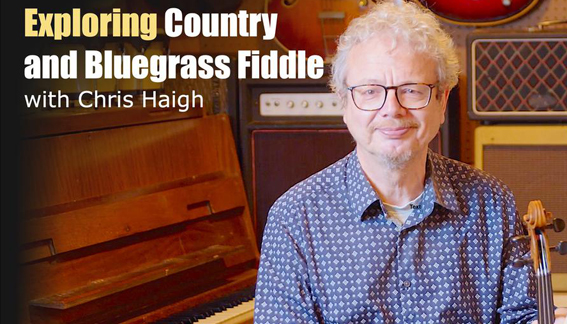

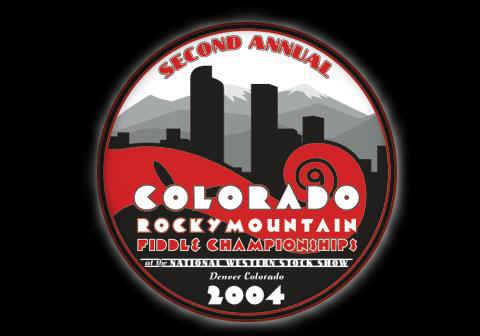
 ....
.... 